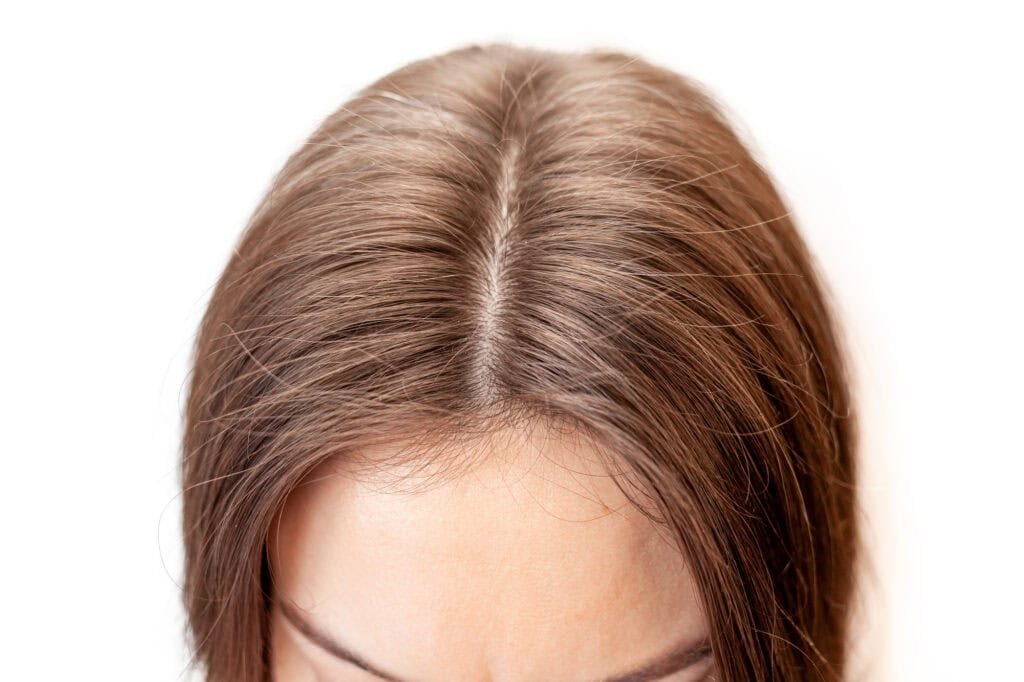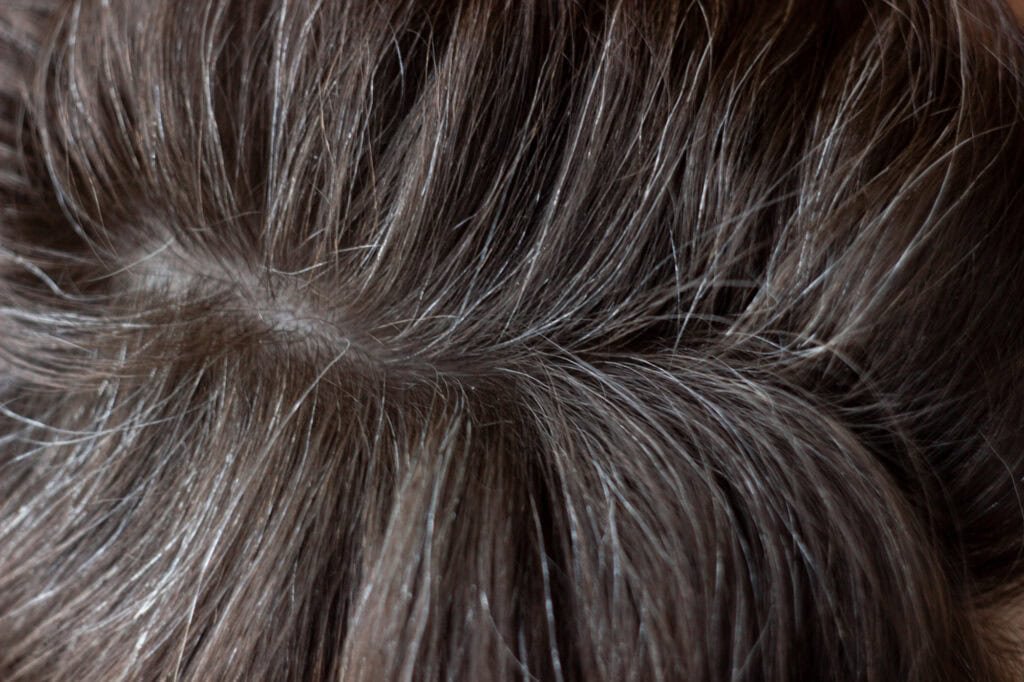Along with the texture and porosity of your hair, hair density is one of the key factors in ensuring the health and beauty of your hair. It’s a factor that should not be overlooked.
If you’ve been told you have low hair density, you may need clarification on what that means and how to care for it. But knowing your hair density will help you choose hairstyles, hair products, and styling tips to bring out the best in your low-density hair.
In this guide, I will explain hair density and how to distinguish between the three types. I will also share tips for making low-density hair look full and choosing the right product.
What is low-density hair?
Hair density is a term that describes the number of individual hairs per square inch of scalp and how tight those hairs are. The more hair you have per square inch, the denser your hair will be.
This term describes your hair as a whole, and your hair density is usually classified as low, medium, and high. Low-density or sparse hair describes strands that are widely spaced apart. In contrast, high-density strands are tightly packed together. As the name suggests, medium-density hair is somewhere in between.
Low hair density could be better and better. This is just one of the features that will help you customize your hair care routine to fit your hairstyle.

What causes low hair density?
Genetic factors, age, overall health, and diet quality influence different types of hair density.
genetics
A 2017 study showed a link between different races and hair density. For example, Caucasian hair is more likely to have a higher density than Asian, Hispanic/Latino, or African hair.
age
Age also affects your hair density, which is usually highest in your 20s.
Starting in your mid-30s, you may notice that your hair starts to thin. This is because the resting phase of the hair growth cycle becomes longer, leading to more shedding.
diet
A diet lacking nutrients such as protein, iron, biotin, and vitamin B12 can lead to hair loss. However, too much selenium, vitamin A, or vitamin E has also been linked to thinning hair.
health
Hair density does not indicate general health conditions, but some health conditions can cause hair density to decrease. These include polycystic ovary syndrome (PCOS), thyroid disorders, and certain autoimmune disorders.
It’s important to note that hormonal changes, such as those during pregnancy and menopause, can also lead to hair thinning. Understanding these natural processes can help manage expectations and reduce anxiety about hair health.
Scalp conditions like seborrheic dermatitis or scalp psoriasis can affect hair follicles, and factors like stress or sudden weight loss can affect the hair growth cycle.
Low-density hair vs high-density hair vs medium-density hair
Determining whether your hair density is high, low, or medium is one of the critical steps in creating a hair care routine that perfectly suits your style.
So, if you’re wondering, “What does low-density hair look like?” Here’s how to distinguish between the three types:
Low-density hair
People with low hair density have fewer strands per square inch of scalp, and you may be able to see through your skin without parting your hair. A ponytail can feel thin; you’ll need to wrap the tie around a few times to hold it in place.
It can be challenging to look voluminous with low-density hair, and heavy hair products can easily weigh down the strands. Therefore, choosing lighter products is crucial.
Medium density hair
Medium-density hair is often called “normal hair” between low and high densities. It has a balanced hair density per square inch, and the scalp is usually invisible unless you separate your hair.
Medium-density hair is versatile and easy to style so that you can choose from many products and styles.
Dense hair
High-density hair has more follicles per square inch than the other two types, making it difficult to see the scalp even when you part the hair. It would help if you had a robust headband for your ponytail.
Styling dense hair can be challenging because it’s so thick and full. Choosing a heavier product can make it easier to manage.

How do you measure hair density?
Hair density is determined by counting the number of hairs on your scalp per square inch. In science LABS, trichoscopy is used to enlarge the scalp and hair 1,000 times, allowing scientists to count the number of hair follicles accurately.
You may not have your trichoscopy, but there are some easy ways to check your hair density at home.
An easy way to do this is to pull your hair in front of you, pull it to the side, and see if the hair shows your scalp.
If you can easily see your scalp, your hair is probably low-density.
If your scalp is hard to see, even partially, you may have a high hair density.
Medium hair is somewhere between, so you can see your skin clearly, but only partially.
If your hair is long enough to wear a ponytail, a ponytail test is another easy way to check the density of your hair. Tie your dry hair into a ponytail and wrap a ribbon or string around the bottom of it. Measuring the length of ribbon or string;
- Less than 2 inches indicates low hair density.
- 2-4 inches indicates moderate hair density.
- 4 inches or more indicates high hair density.
- If you need help with the density of your hair, ask your stylist for professional advice.
What is the difference between hair density and hair thickness?
Hair density and hair thickness are two terms that people often use in place of each other.
Hair thickness can be used to describe the width of each hair, divided into fine hair, medium hair, and coarse hair, also known as coarse. This differs from hair density, which describes how close hair is to each other. Thickness is sometimes used to describe density.
You may have thick or coarse-textured hair that is very low in density but still feels full.
Or, you may have dense, fine hair, which is what people mean when they say they have “fine but lots of hair.” “It will look great when loose, but it may be difficult to tie it up in a bun.”
Can you fix low-density hair?
If you’re wondering how to increase your hair density, you might think you can’t do much without a hair transplant. You can’t make your hair thicker, but there are several ways to make your hair look thicker.
Choose lighter products
If you have low hair density, you must choose a light-colored product. Avoid using heavy oils or creams that weigh down thinning hair and make it look flat. Instead, opt for light creams and essential oils or sprays.
You also need to adjust the amount of product to suit your hair. Low density means fewer strands to cover, so you need to cover each strand with less product than someone with medium or high-density hair.
Style your hair to make it look more voluminous.
Low-density hair is essential, but you can use a few styling techniques to make your hair look fuller.
Letting your hair dry with your head down can add volume, or you can gently brush your hair back for a thicker look. A large iron or curling iron can make your hair look bigger, or you can use an African curling iron to fluff your hair at the roots.
Hot styling and reverse brushing can damage hair. Use these techniques sparingly, and always apply a heat protectant before you begin styling.
Non-heated styling methods can be a game-changer for your low-density hair. For instance, putting damp hair in braids and letting it air dry is a great way to style your hair without causing damage. It’s a technique worth trying.
Scalp massage is a powerful tool for promoting hair growth. By increasing blood flow to the hair follicles, it helps your hair grow full and healthy. It’s a simple yet effective practice that can make a significant difference.
Massage can increase blood flow to the hair follicles and help promote healthy hair growth. This won’t increase the number of hair follicles, but it does help your hair follicles grow full, healthy hair.
Light, penetrating oils like sweet almond oil are ideal for scalp massage. They moisturize hair, help avoid breakage, and make manes look fuller.





